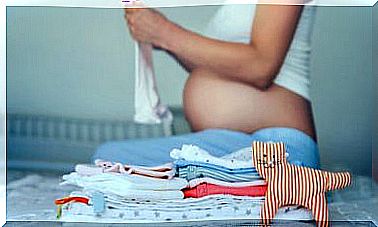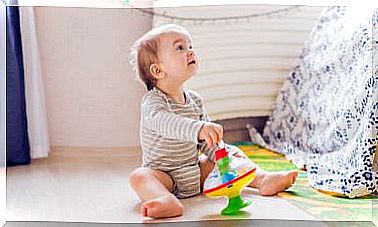How To Treat Baby Reflux?

Reflux is a frequent problem in babies, which can disappear in the first year of life and is almost never a cause of illness. However, it is not the same when the baby regurgitates some milk after nursing, as when he vomits frequently, because in this case we could be talking about gastroesophageal reflux, a condition that can have consequences on his development.
Gastroesophageal reflux causes the common regurgitation of the
drink
, but it is also the cause of the most profuse and violent vomiting. It is important to differentiate when the baby is vomiting and how often it is vomiting, as this can compromise their nutrition, affect their respiratory system, and irritate their throat.
It is very important to observe the moment in which the
symptoms
reflux, for example, if it occurs unannounced or far from mealtime, because it may be a bigger problem. In these cases, it is convenient to consult a specialist, and also when the child is over 12 months of age, but continues to present this problem frequently.
What are the causes of reflux?
In newborns, reflux is caused by a lack of adaptation to food and quantity, usually because their stomach is too small and the amount of milk is exaggerated, in addition, the baby is still getting used to feeding in this way. As it grows, the reflux is caused by problems in the
sphincter
esophageal, it is not always a pathological malfunction, so it corrects itself over time.
Initially, the valve that makes the connection between the esophagus and the stomach is still very weak, so it doesn’t work properly to retain and open the way for meals. This functioning problem is overcome in the first year of life, however, it can fail again at specific times, even adults can suffer from it.
The main cause of reflux in babies is the lack of development of their digestive system, which is totally normal and should not be alarmed. However, it is important to be aware and be able to differentiate when it is a case of violent vomiting, rather than the typical regurgitations of
milk
. 
reflux symptoms
In general, reflux symptoms in babies are related to the expulsion of small amounts of milk because of the weakness of their gastroesophageal system. However, when the problem has turned into something more complex, it may have the following symptoms
● The child may suffer respiratory problems such as coughing, because the return of food obstructs the airways
● Sore throat
● Nausea after eating
● Frequent vomiting
● Abdominal pain
● Disturbance of
sleep
● Spasms
● Weight loss
● Gases
● Ear infection
● Acidity
Treatment for reflux
To treat reflux, the most important thing is to ensure that the baby only eats what he needs, in addition, it is recommended to eliminate gas very well after the meal. When acidity-related problems strike too often, gastric juices can affect the walls of the system, for which antacids are mostly recommended.

It is always advisable to consult a pediatrician before giving any medication to the baby, as he or she may also recommend antacids, an inhibitor of the gastric proton pump or an antihistamine. Other options for ameliorating reflux are related to certain non-pharmacological applications, such as the following.
● Try to feed him in an upright position, allowing his head to be higher than his stomach.
● Feed it small amounts and more often
● Let them eat at their own pace, but if you feel they are eating too fast, give them a
rest
. In case the baby eats slowly, be patient and give him the opportunity to burp during the meal.
● Do not leave the baby for many hours without eating
● Get used to eliminating your baby’s gas regularly, even if he hasn’t eaten recently
● If the baby is
crying
when eating, it is not recommended that you feed it at this time.
● In the case of formula milk or breast milk in the bottle, we can try to add a little cereal, so that the food has a little more consistency and is not so liquid.
● At bedtime, we put a pillow or pillow under his head so that he sleeps slightly on the slope.









